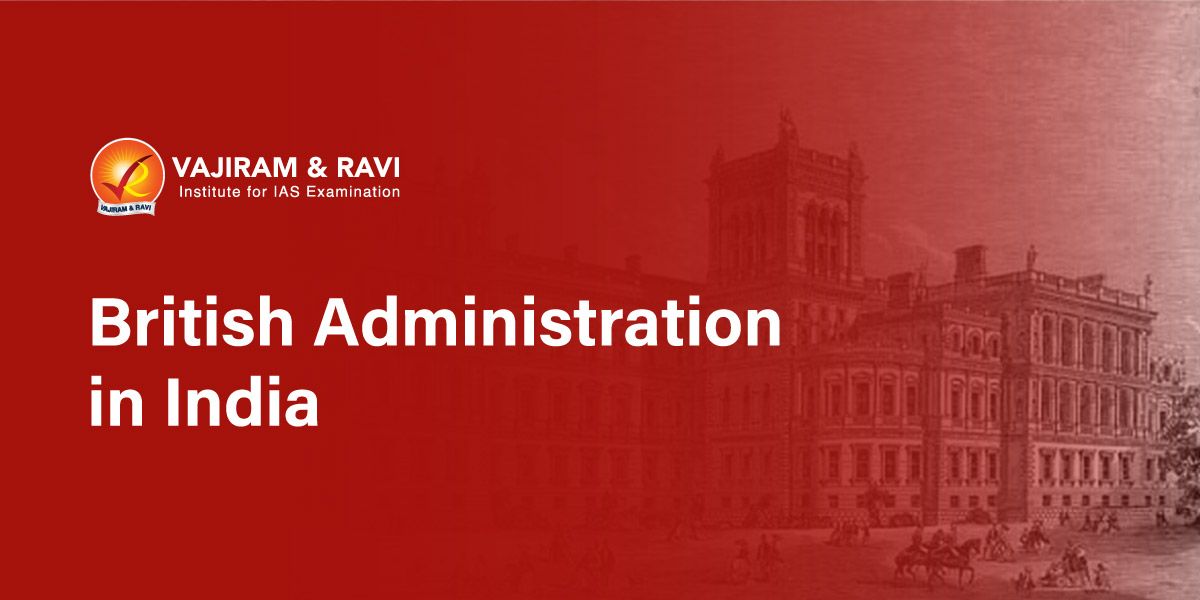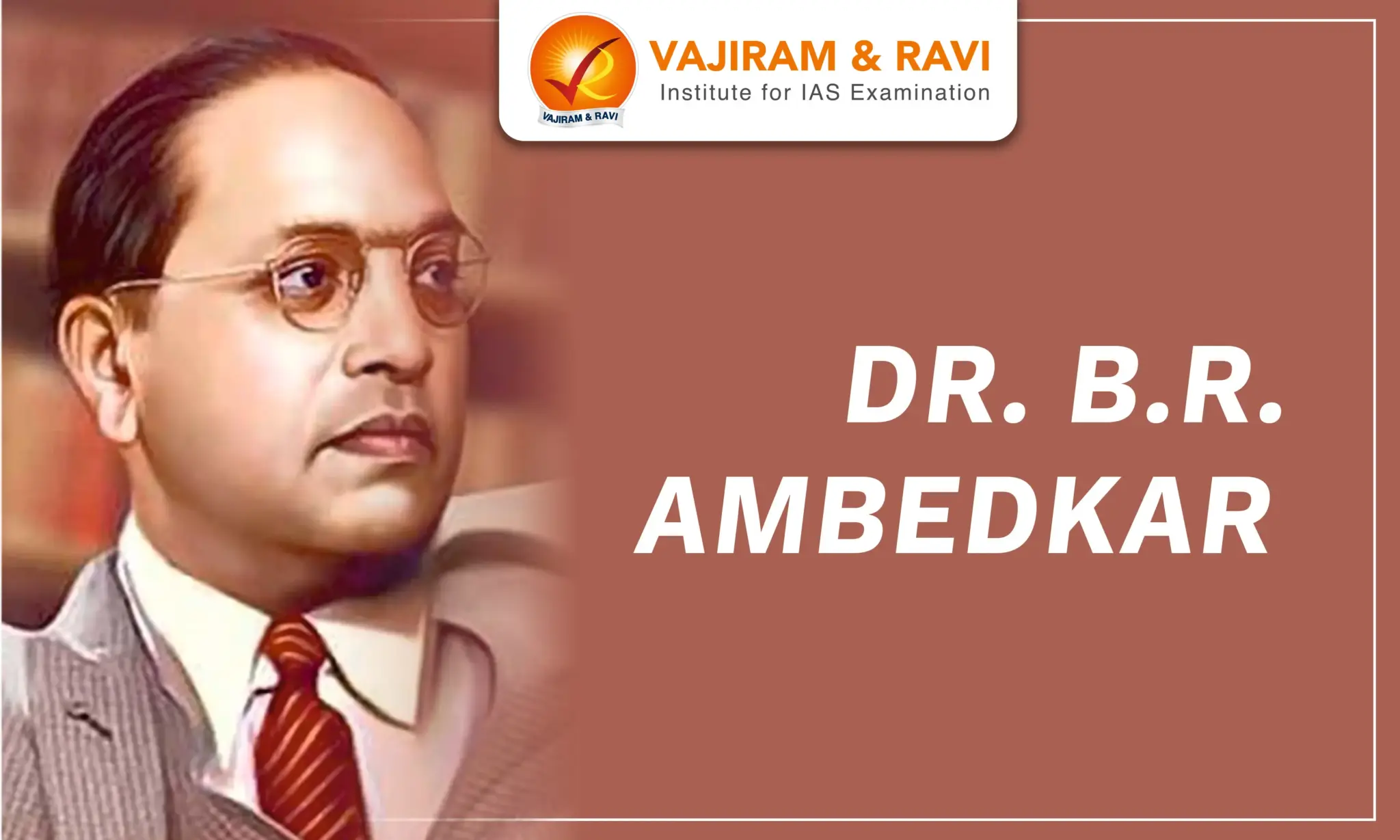British Administration in India: By 1784, the East India Company’s administration of India had been brought under the control of the British Government. The needs of the British economy were determining its economic policies. In the beginning, the Company left the administration of its possessions in India in Indian hands, confining its activities to supervision. But it soon found that British aims were not adequately served by following old methods of administration. Consequently, the Company took some aspects of administration into its own hands. Under Warren Hasting and Cornwallis, the administration at the top was overhauled, and the foundations of a new system based on the English pattern were laid down.
The spread of British power to new areas led the nineteenth century to more fundamental changes in the system of administration. But the overall objectives of imperialism were never forgotten. The British administration in India was based on main pillars like the Civil Service, the Army, the Police, the Judiciary etc. The rules, regulations and reforms in the administration paved the way for consolidating British rule in India.
Military under British Administration
The army served as the second most significant pillar of British Administration in India, after the civil services. The army fulfilled four important functions:
- It served as a tool used to subdue the Indian powers.
- It defended the British Empire in India against outside enemies.
- It protected British supremacy from the constant risk of internal uprising.
- It served as the main tool for defending and expanding the boundaries of the British Empire in Asia and Africa.
Structure of Army before 1857 under British Administration
The origin of the British Indian Army and, subsequently, the army of independent India lies in the origins of the Presidency Armies, which preceded them.
- The Bengal army and the armies of the Bombay and Madras Presidency made up the army of the East India Company; each had a distinctive internal structure and level of professionalism.
- The sepoys of the Bengal army generally hailed from the high-caste (Brahmin and Kshatriya) Hindu families of Oudh and Bihar. Even in their so-called "military villages," they upheld the bonds between caste and community.
- The ties with their original villages were, however, slackened but not snapped.
- The Bombay and the Madras army recruits belonged to the Punjab, Oudh, and Rajputana and hailed from different castes.
- Following the Anglo-Maratha war, there was a surge of Maratha soldiers.
- The armies under British Administration were organised on a professional basis and ecomprised individuals from various castes and ethnic groups, such as the Mer Corps.
- They generally helped the British during the 1857 revolt as loyal professional soldiers.
- In order to achieve mobility without facing resource constraints or resorting to looting, the British armies also professionalised logistics through routine purchases and stockpiling of non-perishable goods.
- The colonial state also took special care to deny the Indian rulers access to resources to prevent them from organising similar professional armies.
- In Princely State territories where succession had lapsed, the annexation principle was used.
- The system of subsidiary alliances with the Indian rulers was initiated with the aim of liquidating the local military and even the quasi-military forces so as to achieve almost complete "de-militarization" of the Indian kingdoms.
Changes in the Military after 1857 under British Administration
The revolt of 1857necessitated certain amendments in the organisation of colonial armed forces.
- The ratio between the number of British and Indian soldiers in India was specified by the Royal Peel Commission (1859).
- In the Bengali army, it was set at one to two, and
- in the Madras and Bombay armies, it was set at two to five.
- The European troops were kept in strategic military and geographic locations.
- The mobile artillery was completely controlled by the British, and the Arms Acts were passed to deny the possession of weapons in the hands of 'unlawful' elements.
- Indians were strictly prohibited from joining the officer corps, as was the previous policy.
- No Indian could advance past the subedar rank prior to 1914.
- In order to reduce the likelihood that the Indian army's section would once again band together in an anti-British uprising, it was organised according to the "divide and rule" policy.
- A fiction was created that Indians consisted of martial and non-martial classes.
- Soldiers from Awadh, Bihar, Central India, and South India, who helped the British Administration to conquer India but later took part in the Revolt of 1857, were declared to be non-martial. They were not taken into the army on a large scale.
- On the other hand, those Punjabis, Gurkhas, and Pathans who had helped put down the uprising were declared to be martial and heavily recruited.
- To prevent the emergence of nationalism among the soldiers, communal, caste, tribal, and regional loyalties were encouraged.
- For instance, communal and caste companies were implemented in the majority of regiments.
- It was kept as far away from nationalist ideas as possible. The soldiers couldn't access journals, newspapers, or nationalist publications.
- The Indian army became, in time, a very costly military machine.
- For instance, it absorbed nearly 52% of Indian revenues in 1904.
Police under British Administration
The third pillar of British Administration was the police, whose creator was again Cornwallis.
Evolution:
- Under the Mughal rule, faujdars helped in maintaining law and order and in the cities, kotwal maintained law and order.
- During the dual system of administration in Bengal, zamindars were expected to maintain the staff, including ‘thanedar’, for maintaining law and order.
- In 1770, the institution of faujdar was abolished.
- Warren Hastings retained the post of the faujdars and utilised the policing functions of the Zamindars during the early phase of Company rule.
- He also appointed Magistrates in the districts because he found this arrangement to be inadequate.
- Each district was divided into smaller sub-units, each under the charge of a darogah who headed a group of 20-30 armed policemen. Darogah supervised the village watchmen who were in charge of 20-30.
| Reformer / Committee | Features |
| Cornwallis |
- Cornwallis set up a regular police force to uphold law and order.
- District Collectors, who served as Magistrates in Cornwallis' administrative system, combined the responsibilities of revenue collection and law enforcement.
|
| Charles Napier |
- In the North-West Frontier Province, the Police organisation first emerged as a separate entity of the colonial state in the 1840s as a quasi-military tool.
- Sir Charles Napier modelled his Police in the Sind Province on the pattern of the Irish Police Organisation (1836).
|
| Police Act of 1861. |
- The Irish Organisation was enshrined in the Act, which was recommended by Police Commission (1860). - Except for Bombay and Madras, the Act was implemented in a number of provinces.
|
| The Frazer Police Commission (1902-03) |
- It suggested two service branches:
|
|
- The British officers dominated the superior posts in the police. - In 1887, a system of competition for higher appointments was introduced, but it was meant only for British citizens. The chosen Inspectors were given the opportunity to apply for a few Assistant Superintendent of Police positions. - The subsequent Police Commissions were asked to address the problem of the Indianisation of a foreign bureaucracy. - When native police officers were replaced by foreign ones as members of the Police Commission in 1912, Gokhale and Justice Abdur Rahim expressed their displeasure.
- Another important aspect of the Police organisation within the colonial state was its military character in its administrative and organisational form.
- The police were forced to use selective control, in which they chose specific social groups as their targets, due to a lack of financial resources and political will. - Additionally, the police continue to be corrupt, ineffective, poorly trained, and poorly equipped. Even Curzon identified all these flaws. - To prevent the army from being overburdened, an armed police unit was established in the 1920s. - This administrative agency was never trusted by colonial policymakers.
|
|
Judiciary under British Administration
Through the establishment of a hierarchy of civil and criminal courts, the British Administration laid the groundwork for a new system of delivering justice. Warren Hastings gave the system a head start, but Cornwallis stabilised it in 1793.
- In 1727, the Mayor's Court was established in Bombay, Calcutta, and Madras for civil disputes.
- A complex legal framework called the adalat established civil and criminal jurisdictions in 1772.
- For the purpose of assisting the presiding judges in interpreting their respective customary laws, both Hindu pandits and Muslim qazis (Sharia court judges) were hired.
- However, British common and statutory laws started to apply generally.
- The two main theoretical principles underlying India's entire British judicial system were the notions of the Rule of Law and Equality before the law.
- Thus, as per theory, no one was above the law and all the citizens, irrespective of their caste, class and other status, were now equal before the law.
- In caste-based Indian society, equality before the law was a novel concept.
- The Europeans and their offspring, however, had their own courts and laws. Only European judges could preside over their criminal trials.
- The principle of habeas corpus provided that no person could be arrested or imprisoned without a written order from the local executive or the judicial authority.
- Even the Government servant, if the acts were done in their official capacity, could be sued in a court of Law.
- Under the Regulating Act of 1773, a Supreme Court in the Presidency town of Calcutta was established.
- The Supreme Court had jurisdiction in Bengal, Bihar, and Orissa, with the exception of cases exceeding Rs. 4,000 requiring appeal to London Privy Council.
- Madras and Bombay Supreme Courts were established in 1801 and 1823, respectively.
- Lord Cornwallis divided executive and judicial duties at the district level.
- Sadar Diwani Adalat was the highest appellate body in civil cases, followed by the four Provincial Courts of Civil Appeals at Calcutta, Dacca, Murshidabad and Patna.
- District courts, registrar courts, and subordinate courts formed a hierarchy.
- There were a lot of magistrates working on criminal cases, but they were overshadowed by the four Circuit Courts in Calcutta, Dacca, Murshidabad, and Patna, which were under the control of Sadar Nizamat Adalat in Calcutta.
- The four Provincial civil and criminal courts were abolished by William Bentinck in 1831, and their duties were transferred to Commissioners and District Collectors.
- Indians' status and authority in the legal system were also elevated by Bentick, who appointed them as Deputy Magistrates, Subordinate Judges, and Principal Sadar Amins.
- The Governor-General in Council received full legislative authority under the Charter Act of 1833.
- A Law Commission led by Lord Macaulay was established by the government in 1833 to codify Indian laws. It eventually resulted in the Indian Penal Code (the Western-derived Codes of Civil and Criminal Procedures and other law codes).
Developments in the Judiciary under British Administration
As the British set up civil and criminal courts in India, it gave rise to modern ideas and the complexity of the justice process.
- Modern ideas: The Indian Constitution adopted the modern ideas of Habeas Corpus, Rule of Law, Equality before Law etc.
- Hierarchy of Courts: The British Judicial Organisation helped India establish the hierarchy of Courts after independence.
- Codification of Laws: The various Acts and Commissions helped to divide laws into civil and criminal laws.
- Integration: The British judicial administration helped India integrate its laws with the Anglo-Saxon system.
- Expensive Justice: Under the British judiciary, justice became quite expensive as court fees had to be paid, lawyers engaged, and the expenses of witnesses met.
- The complexity of Laws: The complicated laws were beyond the grasp of the illiterate and even the general public.
- Corruption: The widespread corruption in the ranks of the police and administrative machinery led to the denial of justice.
Last updated on November, 2025
→ Check out the latest UPSC Syllabus 2026 here.
→ Join Vajiram & Ravi’s Interview Guidance Programme for expert help to crack your final UPSC stage.
→ UPSC Mains Result 2025 is now out.
→ UPSC Notification 2026 is scheduled to be released on January 14, 2026.
→ UPSC Calendar 2026 is released on 15th May, 2025.
→ The UPSC Vacancy 2025 were released 1129, out of which 979 were for UPSC CSE and remaining 150 are for UPSC IFoS.
→ UPSC Prelims 2026 will be conducted on 24th May, 2026 & UPSC Mains 2026 will be conducted on 21st August 2026.
→ The UPSC Selection Process is of 3 stages-Prelims, Mains and Interview.
→ UPSC Result 2024 is released with latest UPSC Marksheet 2024. Check Now!
→ UPSC Prelims Result 2025 is out now for the CSE held on 25 May 2025.
→ UPSC Toppers List 2024 is released now. Shakti Dubey is UPSC AIR 1 2024 Topper.
→ UPSC Prelims Question Paper 2025 and Unofficial Prelims Answer Key 2025 are available now.
→ UPSC Mains Question Paper 2025 is out for Essay, GS 1, 2, 3 & GS 4.
→ UPSC Mains Indian Language Question Paper 2025 is now out.
→ UPSC Mains Optional Question Paper 2025 is now out.
→ Also check Best IAS Coaching in Delhi
British Administration in India FAQs
Q1. What were Indian soldiers in the British Army called?+
Q2. Which institutions under British administration were created by Cornwallis?+
Q3. What was the Subsidiary Alliance Policy?+
Q4. What was the role of police under British Administration?+
Q5. Who is the father of judicial service in India under British Administration?+

















